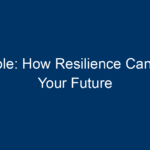Introduction
In today’s economic landscape, the wealth gap is not just a statistic; it’s a reality that shapes the financial futures of individuals and families across the globe. Defined as the unequal distribution of assets and income among different segments of society, the wealth gap impacts everything from access to education and healthcare to job opportunities and overall quality of life. Understanding the wealth gap is essential for anyone looking to secure their financial future. This article explores the causes and consequences of the wealth gap and offers actionable insights to help you navigate its challenges.
What Is the Wealth Gap?
The wealth gap refers to the disproportionate allocation of wealth and resources within a population. A prominent example is the income disparity between the richest 1% and the rest of the population. According to recent studies, the top 10% of earners in many countries hold a significant percentage of the total wealth, while a substantial portion of the population struggles to make ends meet.
Understanding Wealth Inequality
Wealth inequality goes beyond just income levels; it encompasses factors such as property ownership, investments, and social capital. The wealth gap is typically categorized into two types:
- Horizontal Inequality: This refers to disparities between different groups (e.g., race, gender, geography).
- Vertical Inequality: This focuses on differences within a single group, primarily emphasizing the rich versus the poor.
Collectively, these forms of inequality create barriers to economic mobility, making it increasingly difficult for individuals from lower-income backgrounds to ascend the socioeconomic ladder.
The Causes of the Wealth Gap
Understanding the factors contributing to the wealth gap is crucial in addressing the issue. Here are some of the primary causes:
1. Education Disparities
Education is often touted as the great equalizer, but access to quality education varies significantly across socioeconomic lines. Families in lower income brackets often attend underfunded schools, which can perpetuate cycles of poverty. Those without higher education qualifications have limited job prospects and earning potential, further widening the wealth gap.
2. Job Market Dynamics
The digital economy has transformed the job market. High-skill jobs, often requiring advanced degrees or specialized training, have proliferated. On the contrary, low-skill jobs are increasingly being automated, leaving lower-income workers with fewer opportunities. Moreover, a lack of networking and mentorship opportunities can hinder advancement.
3. Structural Racism and Discrimination
The wealth gap is also heavily influenced by systemic issues like racism. Minority groups often face employment discrimination, which can lead to lower wages and fewer job opportunities. Additionally, historical injustices such as redlining and unequal lending practices have made it difficult for certain communities to accumulate wealth.
4. Inheritance and Family Wealth
Wealth begets wealth. Families with substantial financial assets can provide their children with better educational opportunities, financial assistance, and a head start in wealth accumulation. In contrast, those from lower-income families often have to rely on public education and less financial cushion, making it harder to build their wealth.
5. Tax Policies and Economic Shifts
Changes in tax laws and economic conditions also play a crucial role in shaping the wealth gap. Tax breaks for the wealthy, coupled with insufficient social safety nets, contribute to a growing chasm. Shifts in the economy, such as globalization and the decline of manufacturing jobs, also exacerbate income inequality.
How the Wealth Gap Affects Your Financial Future
The consequences of the wealth gap reach far beyond the statistical realm; they affect real lives and futures in various ways:
Limited Access to Opportunities
Individuals from lower socioeconomic backgrounds often find themselves with limited access to critical resources such as quality education, healthcare, and networking opportunities. This restriction can hinder career growth and leave them trapped in low-paying jobs.
Increased Financial Insecurity
The wealth gap contributes to financial instability among individuals who live paycheck to paycheck. Without the ability to save, invest, or build credit, they may find it nearly impossible to break free from the cycle of poverty.
Stress and Mental Health Issues
Financial stress often leads to mental health challenges like anxiety and depression. The constant worry about making ends meet can take a toll on emotional well-being, further compounding the difficulties faced by those affected by the wealth gap.
Limited Retirement Options
Those struggling to make ends meet may not have the luxury to save for retirement. This lack of financial security can lead to dependency on social services or family support in older age, creating a continuous cycle of wealth disparity.
Actionable Insights: What Can You Do?
While the wealth gap poses significant challenges, there are proactive steps you can take to secure a better financial future:
1. Focus on Education and Skills Development
Investing in education and learning new skills can increase your earning potential. Consider pursuing certifications, attending workshops, or returning to school if necessary.
2. Build a Budget and Savings Plan
Creating a budget can help you manage your expenses and identify areas where you can save. Aim to set aside a portion of your income for emergencies and long-term savings.
3. Invest Wisely
Learn about investment options such as stocks, bonds, and mutual funds. Even small, regular investments can compound significantly over time, enabling you to grow your wealth.
4. Network and Seek Mentorship
Building relationships in your field can open doors to job opportunities and career advancements. Find a mentor who can guide you through your career journey.
5. Support Policy Changes
Engage in community initiatives that advocate for equitable economic policies. Support programs aimed at reducing the wealth gap, such as affordable housing and better access to education.
6. Diversify Income Streams
Explore side hustles or freelance opportunities to supplement your income. Diversifying your financial portfolio can also offer additional security.
7. Financial Literacy
Educate yourself about financial matters. Understanding concepts such as credit scores, mortgages, and investment strategies can empower you to make informed decisions.
Conclusion
The wealth gap is a complex issue that affects millions, but it doesn’t have to dictate your financial future. By understanding the underlying causes and taking actionable steps, you can work towards securing a better financial future for yourself and your family. While individual actions may not eliminate the wealth gap entirely, they can serve as crucial building blocks in the pathway toward financial wellness. Addressing the wealth gap requires a collective effort—education, advocacy, and personal commitment. Start today, and take charge of your financial destiny.




